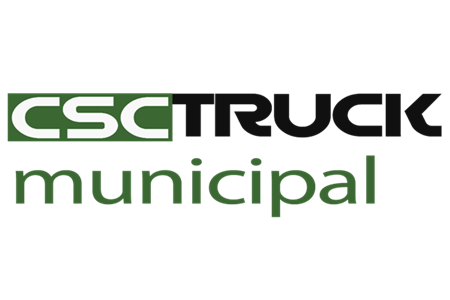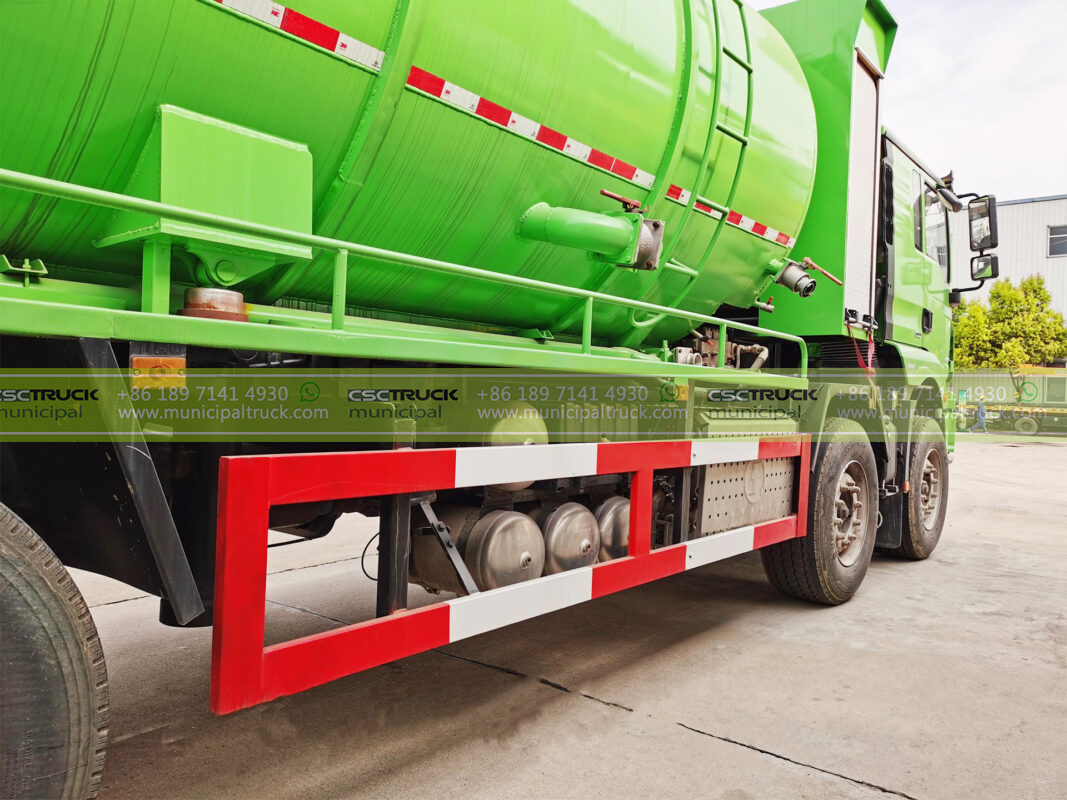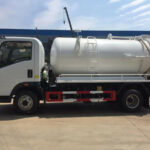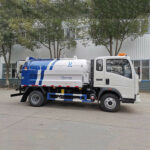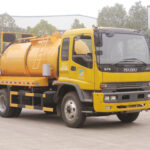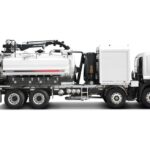Urban infrastructure relies on invisible networks of pipes and drains to function smoothly, yet their maintenance often goes unnoticed until problems arise. Sewer cleaner trucks—equipped with high-pressure jets, vacuum systems, and advanced diagnostic tools—serve as the frontline defense against blockages, contamination, and system failures. These specialized vehicles are not merely reactive solutions for emergencies; they play a proactive role in preserving public health, environmental safety, and municipal efficiency. This article examines the critical functions of sewer cleaner trucks, their technological advancements, and their interconnected role within broader municipal maintenance systems.
1. Preventing Catastrophic Blockages and Overflows
Modern cities generate staggering volumes of waste, from household sewage to stormwater runoff. Sewer cleaner trucks employ high-pressure water jetting systems capable of blasting up to 3,000 PSI to dislodge stubborn obstructions like grease buildup, tree roots, and non-biodegradable debris. Unlike manual rodding methods, these trucks can clear pipes up to 24 inches in diameter without excavation, minimizing disruptions to traffic and urban life.
Targeting Silent Threats
- Fatbergs: Combos of cooking fats and wet wipes that congeal into concrete-like masses
- Invasive roots: Vegetation infiltrating cracked pipes, causing structural damage
- Sediment accumulation: Sand and silt reducing pipe capacity by up to 40%
By conducting routine cleaning cycles, municipalities prevent minor clogs from escalating into sewer overflows—events that can contaminate waterways, trigger fines, and endanger communities.
2. Protecting Public Health and Environmental Safety
When drains fail, the consequences extend far beyond inconvenience. Sewer cleaner trucks directly combat two critical risks:
Halting Pathogen Spread
Stagnant wastewater breeds bacteria like E. coli and parasites such as Giardia. High-volume vacuum systems in these trucks remove contaminated sludge efficiently, while onboard UV disinfection units neutralize pathogens before waste reaches treatment plants.
Preventing Groundwater Pollution
A single collapsed pipe can leak thousands of gallons of untreated sewage into soil and aquifers. CCTV inspection crawlers deployed from cleaner trucks identify cracks and leaks early, allowing targeted repairs before contaminants migrate.
This dual focus on remediation and prevention makes sewer cleaner trucks indispensable for complying with environmental regulations like the Clean Water Act.
3. Cost-Effective Infrastructure Preservation
Replacing sewer lines costs municipalities between 50–250 per linear foot—a financial burden avoided through proactive maintenance. Sewer cleaner trucks extend pipeline lifespans through:
Corrosion Mitigation
- Hydro-oscillation nozzles scrub mineral deposits that corrode concrete and metal pipes
- Epoxy sprayers apply protective coatings during cleaning cycles
Data-Driven Maintenance
Integrated AI analytics software processes footage from inspection cameras to:
- Predict failure risks using pipe age, material, and usage patterns
- Prioritize cleaning schedules based on real-time blockage severity scores
These capabilities help cities allocate resources strategically, avoiding the domino effect of neglect that burdens systems like roads and bridges.
4. Emergency Response and Disaster Preparedness
When storms or accidents overwhelm drainage systems, sewer cleaner trucks transition into crisis management assets.
Flood Mitigation
During heavy rains, trucks:
- Deploy portable pumping units to divert water from flooded areas
- Clear storm drains of debris within minutes using dual-function vacuum/jetting hoses
Hazardous Material Containment
Specialized models feature:
- Explosion-proof components for cleaning fuel-contaminated drains near accident sites
- Chemical neutralization tanks to treat spills before they enter main lines
This rapid-response capability complements other municipal vehicles like garbage trucks (removing flood debris) and sweeper trucks (clearing stormwater grates), creating a coordinated defense against urban disasters.
5. Synergy with Broader Municipal Operations
While sewer cleaner trucks specialize in subsurface maintenance, their effectiveness multiplies when integrated with surface-level sanitation fleets.
Collaboration with Garbage Trucks
- Shared GPS data identifies neighborhoods with frequent drain clogs from improper waste disposal
- Joint public education campaigns reduce trash entering drains (e.g., “Fats to Bins, Not Drains” initiatives)
Coordination with Sweeper Trucks
- Street sweepers prevent leaves and grit from entering drains, reducing cleaner truck workload
- Cleaner trucks return the favor by maintaining drain inlets that keep streets dry for sweeping
This symbiotic relationship ensures comprehensive urban hygiene, where each vehicle—whether a garbage truck hauling waste or a sweeper truck polishing streets—plays a role in preserving the system’s integrity.
From averting public health crises to optimizing taxpayer dollars, sewer cleaner trucks prove that effective infrastructure management begins beneath our feet. Their evolving technologies and collaborative workflows with vehicles like sweeper trucks and garbage trucks underscore a truth every city planner knows: A clean city isn’t just about what’s visible—it’s about safeguarding the hidden networks that keep urban life flowing.
